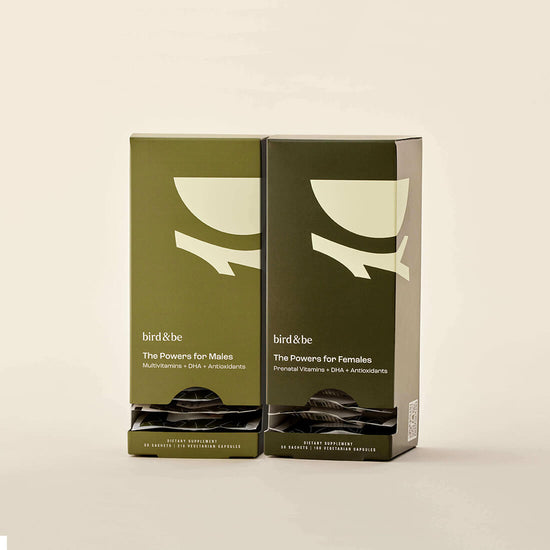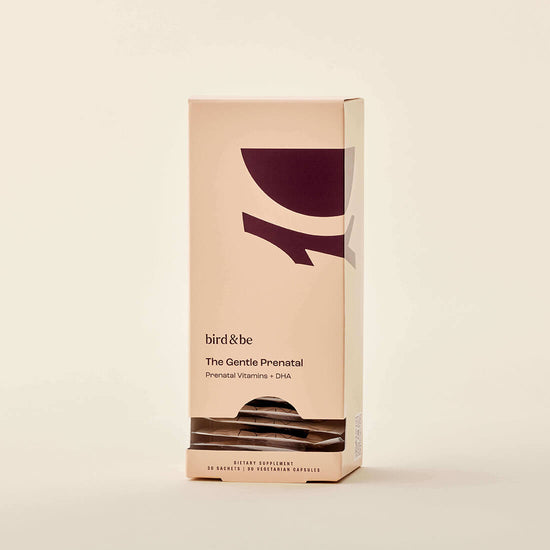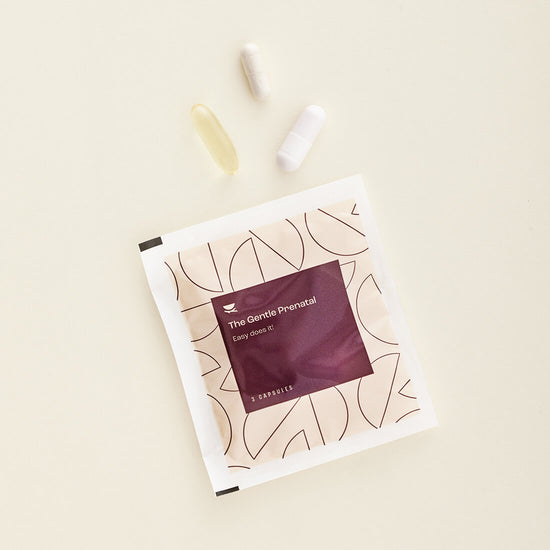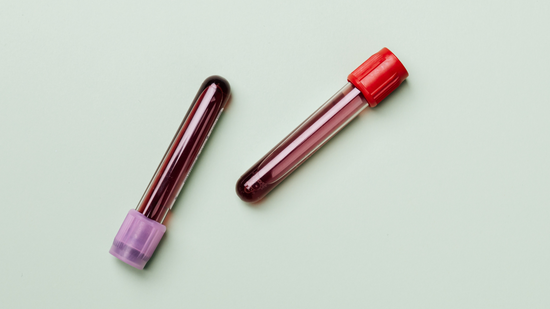Here at Bird&Be, we’re committed to always improving our products so that we can help make your journey a little smoother. You’ve got enough to worry about, after all. So whenever you tell us what you wish your prenatal vitamins had, we’re all ears.
We’ve been hard at work in our R&D lab, adjusting our formulas to make them even better. They’ve always been doctor-approved and packed with top-quality, well-researched ingredients. But why stop there? We’ve listened to all of your valuable feedback and are thrilled to share our new formulas. They offer our same great nutrients that your body needs (and then some!) minus that not-so-great smell that’s common with super-effective vitamins.
Here are four ways we made our science-backed formulas even better:
1. We’ve switched to a non-smelly Selenium.
We heard your feedback! Selenium is essential for the development of follicles (the small sacs that hold eggs), sperm motility and morphology, supporting hormone production, and protecting both eggs and sperm from DNA damage. But, in the form of L-Selenomethionine, it, well… literally stinks. So, we’ve switched over to Selenium Chelate. It has all the same benefits while also being super bioavailable so your body can absorb it easily and—yay!—it doesn’t smell.
2. Our formulas now have two forms of Folate.
In early pregnancy, Folate is crucial for the development of the fetus’s spine, brain and skull. That’s why many medical professional societies recommend taking Folic Acid (a synthetic version of Folate) when you’re trying to conceive. Naturopathic doctors focus on an active form of Folate known as L-5-Methyl-Tetrahydrofolate (5-MTHF) because it’s thought to be more beneficial for those who can’t metabolize Folic Acid as effectively. To cover all your bases, we’ve ensured both forms of Folate (synthetic and active) are in all of our prenatals and within the recommended total Folate dose.
Read our article on Folate to learn more about the differences in type and how DFE (Dietary Folate Equivalent) factors into the equation.
3. Meet our new green capsules.
You’ll spot colorful new capsules in your sachets if you take The Essentials for Females, The Powers for Females, or The Powers for Males. Our Daily Essentials for Females capsules both a little makeover: they’re now deep green—but they’re more than just a pretty shade. These vegetarian capsules are made with Chlorophyll (hence the green) and without any preservatives, gelatin, wheat, gluten or animal by-products. Bonus: The dark color also reduces light exposure so that the ingredients’ integrity is maintained.
4. There’s now even more anti-nausea nutrients in The Gentle Prenatal.
We’ve quadrupled the dose of Vitamin B6 in The Gentle Prenatal to offer more of this key nutrient to anyone who is pregnant and feeling queasy. Not only does B6 support fetal development, it also helps prevent nausea (it’s actually a main ingredient in morning sickness meds). We’ve also added 1,000 IU of Vitamin D, a super important nutrient that helps you absorb calcium from food, assists your baby’s bones to develop, protects your immune system, and helps to prevent preterm birth and gestational diabetes.
In case you’re wondering...
Any other changes?
Our formula now contains 1,000 mcg of Vitamin B12 exclusively in the form of Methylcobalamin, the most bioavailable form of B12. It’s a naturally occurring form of the vitamin that’s already in active form, ready for your body to use. When combined with Folate, B12 also supports a healthy pregnancy and decreases the risk of NTDs (neural tube defects). It’s even more important to supplement with B12 if you follow a vegetarian or vegan diet, as B12 is only found in animal-source foods.
We’ve also adjusted the amount of Calcium in our supplements to make room for some of the added ingredients without increasing the number of capsules overall (we heard your feedback about capsule fatigue!). We’ll soon launch a separate Calcium/Magnesium supplement for those who are in their second or third trimester, or postpartum, and might need an extra boost of these minerals. Because prenatal vitamins are intended to supplement the Calcium you get from your diet (as it’s a readily available mineral found in many foods, both whole and fortified), they aren’t meant to be relied upon to meet your total daily Calcium intake requirements. Make sure you get your nuts, seeds, leafy greens, dairy, fish and beans!
Lastly, we’ve made sure that our supplement labels show you the amount of elemental nutrients and adjusted how we’re reporting our ingredient list to be as transparent as possible. So what does this mean? Vitamins and minerals in raw ingredient form are bound to an “escort” molecule. So Calcium could be bound with a molecule like Carbonate, Phosphate, Citrate, or Gluconate in order to deliver the elemental Calcium to your body for absorption. Some labels will list the entire volume of the ingredient (for example, 100 mg of Calcium Citrate), others list only the nutrient itself by weight (for example, listing the Calcium alone, not the large Citrate molecule attached: 20 mg Calcium (as Calcium Citrate)). We’re using the latter (the elemental form) so that you know exactly how much of each nutrient you are consuming as part of an overall healthy diet. You can now see the elemental volume of all our ingredients, so can be sure of how much you are getting.
Is it OK to take more Vitamin B6 if I’m on Diclectin/Diclegis?
Yes. The upper limit of B6 intake is 100 mg/day. Each capsule of the anti-nausea medication Diclectin or Diclegis (a doxylamine succinate and pyridoxine hydrochloride delayed release tablet to treat nausea and vomiting of pregnancy) has 10 mg of B6. Most people begin with four tablets of the anti-nausea medication per day, so adding the 40 mg of B6 in The Gentle Prenatal is still under the upper limit.
Is there enough Methylated Folate (5-MTHF) if I have the MTHFR mutation?
Great question! First, a quick recap on the mutation and how it works: The MTHFR gene (A.K.A. Methylenetetrahydrofolate Reductase) instructs your body to make the MTHFR enzyme, which processes Folate into its final, usable form of 5-MTHF. But many people have a variant of this gene—most Americans do—and there are several types of MTHFR gene variants (mutations). Some decrease the ability of the enzyme to process Folate. And if there’s a mutation to both copies of your MTHFR genes (reminder: we inherit a copy from each of our biological parents), it impacts the ability to create that essential enzyme in the first place. To overcome this potential enzyme deficiency, and knowing how critical Folate is for a healthy pregnancy, our supplements have the recommended dose of 600 mcg (which is equivalent to 1,000 mcg DFE [Dietary Folate Equivalent] of 5-MTHF), the biologically active final form.
What is 5-MTHF anyways?
5-MTHF is a naturally occurring form of Folate and is super well-absorbed by the body. When we ingest Folate (either from whole foods, or via supplements or fortified foods with Folic Acid), our body needs to do some work to metabolize it into the usable form, which is called L-methyltetrahydrofolate or 5-MTHF. So by taking Folate in a highly bioavailable form (5-MTHF), your body has to do less work converting it. Think of it like skipping ahead on the assembly line right to the final stage. The nutrient is already converted and ready for use.
No more stink—awesome! Any other tips for reducing nausea when I take my prenatals?
If you’re in your first trimester and everything is making you feel green, take your prenatals after food. The fats you eat will help your body absorb the fat-soluble vitamins, while the enzymes and cofactors in your food help break down other nutrients. P.S. The Gentle Prenatal is specifically formulated to get you all the nutrients you need—minus the nausea—when you’re pregnant and feeling queasy.







